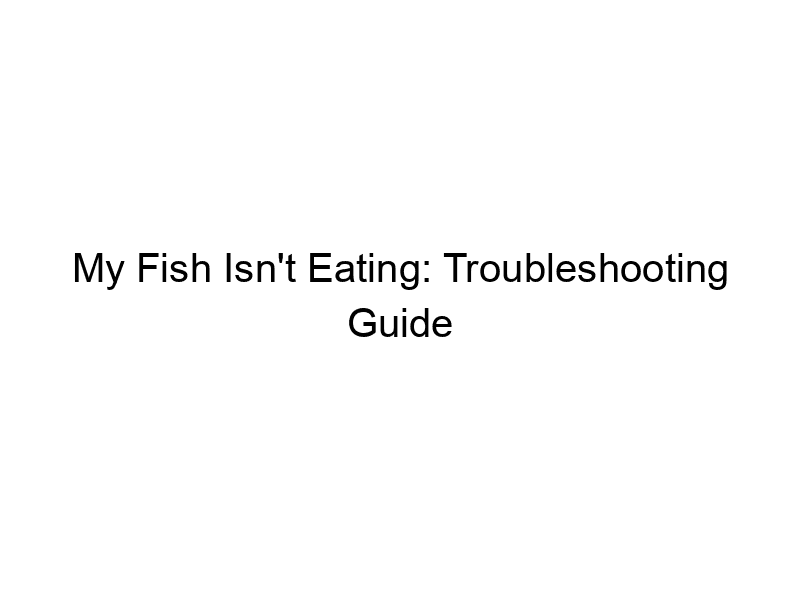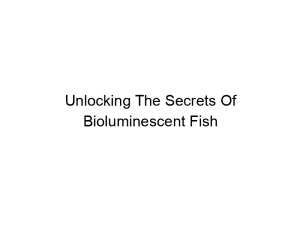Seeing your fish refuse food is alarming. This guide will walk you through the common reasons why is my fish not eating?, offering solutions to get your finned friend back to their healthy, hungry selves. We’ll cover everything from simple adjustments to more complex health issues, providing you with the knowledge to diagnose and address the problem effectively. You’ll learn how to observe your fish’s behavior, identify potential causes like water quality issues or illness, and implement effective solutions to encourage them to eat again.
Different fish species have varying appetites and feeding habits. Some are voracious eaters, while others are more selective. Observing your fish’s typical eating habits is crucial to identify any deviation. Note the frequency, amount, and type of food they consume. A sudden change in their eating pattern warrants investigation.
Common Reasons Why Your Fish
Isn’t Eating
Water Quality Issues
Poor water quality is a leading cause of anorexia in fish. Ammonia, nitrite, and nitrate build-up are toxic and can severely affect their health and appetite. Regular water changes (at least 25% weekly for most setups) are crucial. Test your water parameters regularly using a reliable test kit to ensure optimal levels. High levels of ammonia or nitrite are immediately concerning.
Temperature Fluctuations
Fish are ectothermic, meaning their body temperature relies on their environment. Sudden or significant temperature changes can stress them, leading to appetite loss. Use a reliable thermometer to monitor water temperature and ensure it remains within the ideal range for your fish species. Gradual temperature adjustments are recommended, never more than 2-3°F per hour.
Parasites and Diseases
Internal or external parasites, bacterial infections, or fungal diseases can make fish lethargic and unwilling to eat. Signs of illness include lethargy, unusual swimming patterns, fin clamping, cloudy eyes, or lesions on the body. Consult a veterinarian specializing in aquatic animals for diagnosis and treatment. Early intervention is key.
Stress and Shock
Introducing a new fish, relocating them, or sudden changes in their environment can stress fish, resulting in reduced appetite. Provide ample hiding places in the aquarium to reduce stress and allow them to acclimatize gradually to any changes.
Diagnosing the Problem: Observing Your Fish
Behavioral Changes
Observe your fish closely for any unusual behaviors. Are they hiding more than usual? Do they seem lethargic or unresponsive? Are they flashing (rubbing against objects)? Any changes in their normal behavior can be a symptom of an underlying problem.
Physical Examination
Examine your fish for any visible signs of illness, such as lesions, discoloration, fin rot, or unusual growths. While this is best left to a professional, observing these changes will aid your vet in diagnosis.
Water Parameter Check
Regularly test your water parameters for ammonia, nitrite, nitrate, and pH levels. These are crucial indicators of water quality. A water testing kit should be a staple in any fishkeeper’s toolkit.
Solutions for Anorexic Fish
Improving Water Quality
Perform a partial water change (25-50%, depending on tank size and severity), clean the filter media, and vacuum the gravel or substrate. Consider adding water conditioner to dechlorinate and detoxify your water.
Stabilizing Temperature
Ensure the water temperature is within the ideal range for your fish species. Use a heater or chiller if necessary. Avoid drastic temperature fluctuations.
Treating Diseases and Parasites
Based on your vet’s diagnosis, administer medication as prescribed. Follow instructions carefully and monitor your fish closely for any improvements or adverse reactions.
Stress Reduction Techniques
Provide ample hiding places, minimize disturbances, and acclimate new fish gradually. Avoid overcrowding the tank. A calm environment promotes better health and appetite.
Dietary Adjustments
Try offering a variety of foods to see what your fish is willing to eat. Experiment with different food types, brands, or sizes. Live or frozen foods may be more appealing than dry flakes.
Choosing the Right Food for Your Fish
Variety is Key
Offer a balanced diet incorporating different types of foods, such as flakes, pellets, frozen foods, and live foods (appropriately sourced). Avoid overfeeding as excess food can pollute the water.
Food Quality Matters
High-quality fish food provides essential nutrients for optimal health. Look for reputable brands that provide balanced nutrition for your specific fish species.
Advanced Troubleshooting Techniques
Quarantine New Fish
Always quarantine new fish before introducing them to your main tank. This prevents the introduction of diseases or parasites that could affect your existing fish.
Detailed Observation Logs
Maintaining detailed records of your fish’s behavior, water parameters, feeding patterns, and any treatments administered will assist in future diagnoses and management.
Consult Aquatic Veterinarian
If you are unable to identify the cause of your fish’s anorexia or if the problem persists, consult a veterinarian specializing in aquatic animals.
Frequently Asked Questions
Why is my fish refusing to eat even after water changes?
Even with optimal water parameters, other factors could be at play. Consider parasites, diseases, internal problems, or stress. A veterinary examination is crucial.
My fish is eating less than usual, is this always a cause for concern?
Not necessarily. Minor fluctuations can occur. However, a significant and prolonged decrease in appetite warrants investigation. Observe other behaviors and water quality.
What types of food should I avoid giving my fish?
Avoid food that is spoiled, moldy, or has expired. Also, avoid foods that are not formulated for your fish species, as these may lack essential nutrients.
How often should I feed my fish?
Feeding frequency varies greatly depending on species, age, and activity level. Generally, once or twice a day is common, but this can be adjusted based on individual needs.
Can stress cause my fish to stop eating?
Yes, absolutely. Changes in the environment, tank mates, or even noise can stress fish, leading to appetite loss. A quiet, stable environment is key.
Final Thoughts
Addressing why your fish isn’t eating requires careful observation, accurate diagnosis, and prompt action. While many issues stem from easily correctable factors like water quality, others may require veterinary intervention. By understanding your fish’s specific needs and regularly monitoring their environment, you can prevent and address many of the reasons for a decreased appetite. Remember that proactive care and attention to detail are crucial for maintaining the health and well-being of your aquatic companions. If you’re still unsure, don’t hesitate to seek advice from experienced fish keepers or a veterinarian.
Regular water testing, a balanced diet, and a stress-free environment are cornerstones of healthy fishkeeping. By implementing the solutions outlined in this guide and remaining vigilant in observing your fish, you can help them regain their appetite and thrive.




